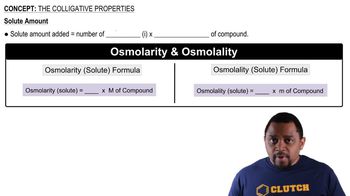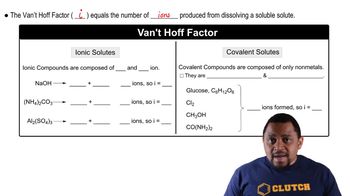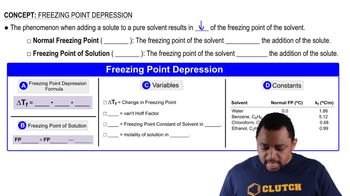Here are the essential concepts you must grasp in order to answer the question correctly.
Colligative Properties
Colligative properties are physical properties of solutions that depend on the number of solute particles in a given amount of solvent, rather than the identity of the solute. These properties include boiling point elevation, freezing point depression, vapor pressure lowering, and osmotic pressure. In this question, the van 't Hoff factor (i) indicates how many particles a solute dissociates into, which directly affects the freezing point of the solution.
Recommended video:
Van 't Hoff Factor (i)
The van 't Hoff factor (i) is a dimensionless number that represents the number of particles into which a solute dissociates in solution. For example, a non-electrolyte like substance A, which does not dissociate, has i = 1, while a substance like B, which dissociates into three particles, has i = 3. This factor is crucial for calculating changes in colligative properties, such as freezing point depression, in the context of the phase diagram.
Recommended video:
Freezing Point Depression
Freezing point depression is a colligative property that describes the decrease in the freezing point of a solvent when a solute is added. The extent of this depression can be calculated using the formula ΔTf = i * Kf * m, where ΔTf is the change in freezing point, Kf is the freezing point depression constant of the solvent, and m is the molal concentration of the solution. Understanding this concept is essential for determining the melting points of the solutions in the phase diagram.
Recommended video:
Freezing Point Depression




